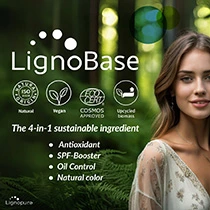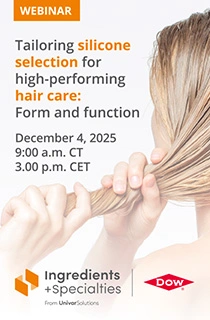Oral care evolves into holistic health with beauty crossover and AI-driven personalization
Oral care is shifting from uniform, function-first products to personalized solutions that consider consumers’ overall health, beauty, and lifestyle demands.
We speak with industry experts at Unilever and Kenvue to explore the drivers behind this holistic oral care movement. We discuss the importance of the mouth’s microbiome in R&D, the growing trend of oral care as a beauty routine, and the role of AI in the industry’s transformation.
“In society today, consumer expectations have evolved well beyond the traditional view of oral care as purely functional. People now seek targeted, multi-benefit solutions that address both therapeutic needs and cosmetic aspirations, with a strong preference for products that feel pleasurable to use,” Gaurav Datta, global VP Asia for Skin Cleansing and Oral Care at Unilever, tells Personal Care Insights.
Datta explains that several converging trends are shaping the future of oral care.
One driver is the growing role of a healthy smile in self-expression. Consumers, especially younger ones, increasingly view whitening and alignment as part of their beauty routine.
Another trend Datta identifies is rising awareness of the oral microbiome and its links to systemic health. Research is prompting demand for products that support both oral and whole-body well-being.
Finally, consumers are seeking personalized, results-driven routines. They are open to new formats, flavors, and devices that make oral care more engaging and enjoyable, he notes.
Open minds, open mouths
Today’s oral care consumers are increasingly questioning long-held oral care assumptions, but are also armed with greater ingredient knowledge.
Karina Ribeiro, R&D global head of Essential Health at Kenvue, explains that this pushes brands to deliver novelty, variety, and transparency.
“Similar to trends across personal care products, we notice oral care consumers becoming more educated about the ingredients in the products they choose — we are finding ingredient transparency is key for young consumers,” she says.
“Listerine has focused on developing safe and effective alcohol-free essential oils containing formulations with clear and transparent messaging and complementing ingredients,” Ribeiro adds. She also notes that consumers’ openness to novelty drives brands to rethink formulations.
.jpg) Younger consumers increasingly see whitening and tooth alignment as part of their personal beauty regimen.“Consumers are open to trying new products. It challenges the industry to ensure we are optimizing formulas to ensure consumer concerns are addressed.”
Younger consumers increasingly see whitening and tooth alignment as part of their personal beauty regimen.“Consumers are open to trying new products. It challenges the industry to ensure we are optimizing formulas to ensure consumer concerns are addressed.”
As such, Ribeiro explains that the oral care category is experiencing demand for an increased variety of flavor options: “The link between a strong mint sensory profile and efficacy isn’t a requirement for the Gen Z and Gen Alpha consumers, who expect a broad range of experiences without sacrificing any benefits.”
Balancing the bite
In skin care, companies use microbiome science to develop products that support barrier function, maintain the balance of beneficial bacteria, and promote overall skin health.
Innova Market Insights data reports a 52% increase in microbiome-related claims for product launches between April 2019 and March 2024.
According to Datta, this growing interest is increasingly extending into oral care, where advancements in microbiome research position the category as a gateway to overall well-being.
He adds: “The diversity of microbiome in our mouths is second only to our guts.”
“Research into the oral microbiome is already revealing its influence on conditions ranging from gum disease all the way to systemic health concerns like cardiovascular disease and diabetes. With this knowledge, we can imagine oral care products that will provide the next generation of preventative care that will improve our total health and well-being,” he adds.
Ribeiro says microbiome science is becoming a regular topic in the company’s conversations with dental professionals and oral health researchers.
“Listerine products are studied extensively for their effect on the oral microbiome, offering an opportunity to provide oral health efficacy while supporting a balanced oral microbiome with continued product use,” she explains.
Ribeiro says Kenvue’s ongoing research aims to better understand the complexity of the mouth’s microbiome structure and composition. She explains that this knowledge helps the company address consumers’ individual health needs and, in turn, create targeted oral health solutions that may also benefit systemic health.
Looking ahead to the next decade of oral care innovation, Ribeiro predicts: “Fully understanding the relationship between how oral care products impact the oral microbiome and how the microbiome impacts oral and whole-body health will be critical.”
.jpg) Consumer demand pushes the industry to explore adjacent devices and novel delivery systems.Gum health gains ground
Consumer demand pushes the industry to explore adjacent devices and novel delivery systems.Gum health gains ground
While oral care has often emphasized tooth protection, gum health is increasingly prioritized within the holistic landscape.
“Gum disease is the leading cause of tooth loss globally, yet its prevalence in many of our key markets, particularly in Asia, is significantly under-represented in the product landscape. This presented an opportunity for targeted innovation,” Datta says.
He spotlights Unilever’s Pepsodent GumExpert, which uses a “clinically proven” formula that inhibits plaque growth along the gumline, reduces inflammation and bleeding, and protects the gum seal, helping to prevent tooth loss.
“These advances are a direct response to consumer demand for solutions that not only treat but help prevent serious oral health issues.”
Glow in the grin
The crossover between beauty and oral care is another key player in the holistic shift. While older demographics are more attuned to preventative care for issues like gum disease and sensitivity, younger consumers increasingly see whitening and tooth alignment as part of their personal beauty regimen, according to Datta.
“Research shows that 62% of consumers say tooth color impacts their self-confidence, and 57% avoid facing others if their teeth are not white.”
“We are seeing an exciting pivot from consumers, in which they are seeking oral care products that go beyond cleaning […] and bring beauty to the oral care aisle. This shift has been a key driver behind the development of our Pepsodent Expert and Closeup White Now ranges,” he notes.
Beyond aesthetic results, Datta says consumers also want oral care to deliver sensorial experiences. They seek engaging textures, tastes, and formats that make the routine more enjoyable, according to Datta. This demand pushes the industry to explore adjacent devices and novel delivery systems, such as sprays and powered brushes with diagnostic capabilities.
Datta says brands are now moving toward creating products that “connect emotionally, align with lifestyle aspirations, and provide visible, credible results.”
“We have extended the [Closeup White Now] range with premium new formats such as tooth polishers and Stain Away sprays. These innovations are designed for ease of use at home, enabling consumers to tackle common lifestyle stains from coffee, tea, or wine,” he adds.
.jpg) The diversity of microbiome in our mouths is second only to our guts.Datta says one common insight stands out across the Pepsodent Expert and Closeup White Now brands: “Consumers want products that combine high-performance efficacy with aspirational design, giving them functional results and an elevated daily experience.”
The diversity of microbiome in our mouths is second only to our guts.Datta says one common insight stands out across the Pepsodent Expert and Closeup White Now brands: “Consumers want products that combine high-performance efficacy with aspirational design, giving them functional results and an elevated daily experience.”
AI to predict, prevent, personalize
Meanwhile, AI is reshaping the oral care industry, both in how consumers experience products and how companies develop them. On the consumer side, Datta sees a major opportunity for personalization.
“I expect AI will help us move much faster in this space and design more personalized and diagnostics-led products. This could lead to highly individualized regimes that adapt dynamically to a user’s lifestyle, diet, and oral health status, whether that means recommending a specific toothpaste formulation, adjusting brushing patterns, or flagging early signs of gum or enamel issues,” he says.
“In practical terms, this would move oral care from a reactive model to a predictive and preventative one, integrating it more closely with broader health management. For the industry, these advances represent an opportunity to combine scientific rigour with consumer intimacy — delivering solutions that are precise, adaptive, and deeply relevant to the individual.”
On the development side, Kenvue’s Ribeiro tells us that AI can only deliver these benefits if it has the correct data to work with.
“We need to ensure that we are providing information not just directly to consumers or health care providers, but also in a format that is understood and synthesized by Large Language Models,” she says.
In practice, companies must structure their product and ingredient data in ways that AI tools can process. By doing so, large-scale models can analyze consumer behavior, identify unmet needs, and highlight innovation gaps.
This feedback loop helps accelerate product development and ensure that new solutions remain aligned with evolving consumer expectations for holistic oral care.














